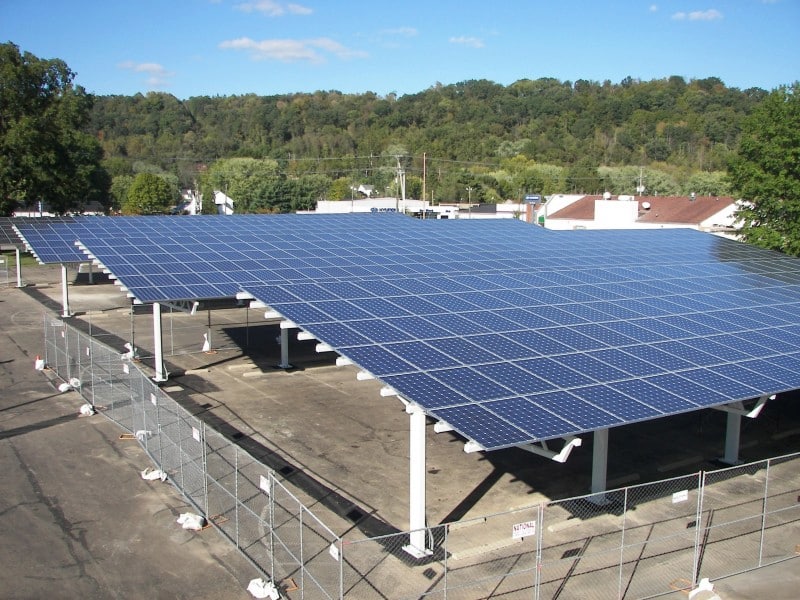Ohio Supplies National Solar Boom; Sees Its Own Capacity Slip
Wednesday, Aug 26 2015

While the American solar industry continues to grow by leaps and bounds across the country, Ohio falls farther and farther behind its neighboring states in the amount of solar installed. Indeed, Ohio is a cautionary tale of how smart government policy, like the federal investment tax credit (ITC), can help a young, cutting edge industry like solar grow, attract investment and create jobs while bad government policy can stunt the growth of an industry.
Total U.S. solar capacity is expected to double over the next two years, and more than 30 percent of all electric generating capacity installed in the U.S. has been from solar.
In 2010, the federal ITC helped Ohio companies install more than 19 megawatts (MW) of solar, to make it the 13th biggest solar state, ahead of Indiana, Illinois, and even sunny Hawaii at the time. Solar in Ohio continued to grow from 2010-13, adding an additional 86 MW.
But in 2014, renewable energy sources like solar hit a major roadblock in Ohio when the state legislature and Gov. John Kasich enacted legislation to freeze Ohio’s renewable portfolio standard (RPS) for two years. Bad policy decisions have consequences. Over the next two years, Indiana is expected to install 165 MW of solar power, and gain all the jobs and economic benefits that come with the buildout, while Ohio won’t even install half as much solar (76 MW), despite a much larger electricity need.
Ohio’s drop in the solar rankings is more than a loss of pride— it’s a missed opportunity. Building out solar projects translates into good, well-paying jobs for America, but Ohio lawmakers are fighting solar’s full economic potential by burying their heads in the sand. It’s time to restart the RPS and allow Ohio’s renewable energy market to fully develop.
Ironically, Ohio companies have ramped up operations to support their growing out-of-state business, and the jobs are telling.
According to The Solar Foundation’s 2014 State Solar Jobs Census, solar jobs in Ohio have grown 45 percent in the last two years, from 2,900 in 2012 to 4,300 in 2014, with the majority of those jobs in the manufacturing sector. These manufacturers produce a variety of solar components from wiring, electronics and glass, to solar panels and the metal racking that hold them in place.
Ohio’s solar paradox thickens, as some of the country’s largest and most iconic brands find value in going solar in Ohio. This year, General Motors’ largest solar installation in the western hemisphere became operational in Lordstown. The 6.5-acre structure contains 8,550 panels and provides 2.2 MW of power to GM’s Lordstown Complex, which is among the highest-volume, single-line vehicle assembly facilities in the world. GM now has a total of 4 MW of solar energy powering its Ohio facilities. Meanwhile, Walgreens has more than 2 MW of solar on its Ohio stores, while Walmart has more than 5 MW.
However, the scheduled drop at the end of 2016 in federal ITC from 30 percent to 10 percent for commercial users, and to zero for residential users, combined with the freeze of the Ohio RPS, will cause the market for Ohio’s solar manufacturers to contract significantly. Any realistic chance for the state’s already beleaguered solar installers and developers to turn the tide in the state will disappear.
The deadline in 2016 to renew the federal ITC for solar energy and lift Ohio’s RPS freeze will be here before we know it. As an industry, we strongly urge Ohio lawmakers and the state’s Congressional delegation to support lifting its RPS freeze and extending the ITC for five years. By then, analysts predict solar will reach grid parity in most electricity markets, helping to create a level playing field among energy producers, diversifying our power sources, offering more consumer choices and boosting the state and national economy.
Solar is an economic engine for America and its future in Ohio should be bright.